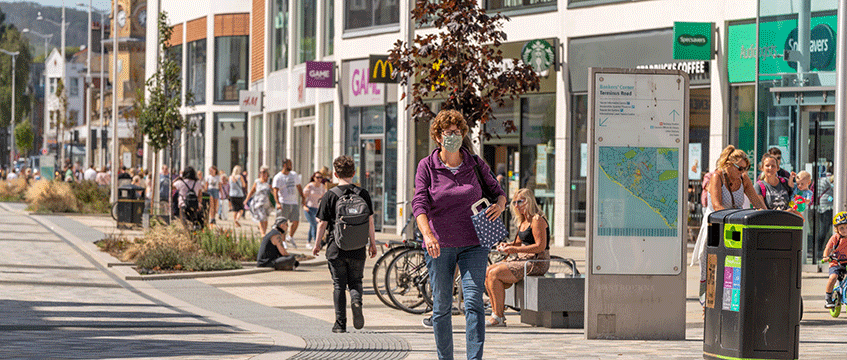Has the topic of getting people back to the workplace been a mainly London problem? It is important, as it forms a crucial part of boosting the all-round economy.
According to the highly regarded Centre for Cities’ high streets recovery tracker, Britain’s regions led the way out of lockdown – partly on the back of Eat Out to Help Out – with London some way behind as the worst performing city by increase in footfall.
Footfall improvement was actually strongest in medium-sized towns like Blackpool, Bournemouth, Birkenhead, Southend and Basildon, with Bournemouth and Southend also seeing some of the highest increases in spending by those people who have returned.
No doubt some of this was due to some of these towns’ seaside locations in a summer of staycations, but it is also striking to see from Centre for Cities Manchester, Birmingham, Bristol and Leeds outperform the capital, which has for so long been the UK’s powerhouse.
Yes, these cities have challenges of their own and are by no means back up to pre-Covid-19 footfall levels. Plus, according to Centre for Cities, when people do arrive in London they are the second highest spenders in the UK, according to a ratio of footfall to spending. But according to the same measure, people in Cardiff are spending more, people in Birmingham are spending the same as in the capital, and Glasgow, Liverpool and Manchester are not far behind.
Neglected regions
Are we seeing the beginning of a fundamental realignment of the UK, caused by Covid-19 and perhaps overdue as the capital becomes overcrowded and the regions have become more neglected than they should have been? Was last December’s general election the first sign of change to come?
At Palace Capital, where our office-led portfolio is focused on England’s regions, we saw this coming for some time and it has been fascinating to travel to Liverpool, Manchester, Leeds and York in recently to see how much busier they are.
Partly this is because people in these cities are far more likely to drive to work, putting much less emphasis on public transport, and this is likely to be a continuing factor in years to come. The importance of digital connectivity cannot be stressed too strongly, and a number of our regional cities are ahead of London.
We believe this adds up to a positive outlook for the UK’s regional cities, especially as demand grows from major occupiers looking to adopt a ‘hub-and-spoke’ model.
Giants like NatWest and Barclays are currently advising staff that they have the option of working from home in the short term, but a far better solution for their own cost base, their teams’ morale and the UK’s levelling up agenda would be to disperse their offices out of London.
Keep the London headquarters as the hub by all means, but opening or expanding regional offices in the UK’s core cities, giving people a shorter commute, is a far better idea than continuing to pour investment into the capital and asking people to commute from as far as Doncaster or Bristol.
The student retention rate in the UK’s cities is also growing, with Manchester retaining over 50% of its graduates, Birmingham 48% and Newcastle 35%, so a talented regional workforce is there.
Lead the way
But just as regional office demand is set to grow, supply is becoming even more constrained.
Recent data from Savills show the full impact of permitted development rights, with an estimated 6.9m sq ft a year of offices being converted to residential in the last four years.
This means that supply of grade B and C offices in the regions has halved from 20m sq ft to 10m sq ft in 2020. At the same time, lower rents in the regions have limited supply of new office developments, meaning even tighter limits on what is on offer.
Covid-19 has been a grim experience for the UK, but one silver lining could be dispersal of the workforce out of the overcrowded South East to our great regional cities – which already appear to be leading the way.
Neil Sinclair is chief executive at Palace Capital











